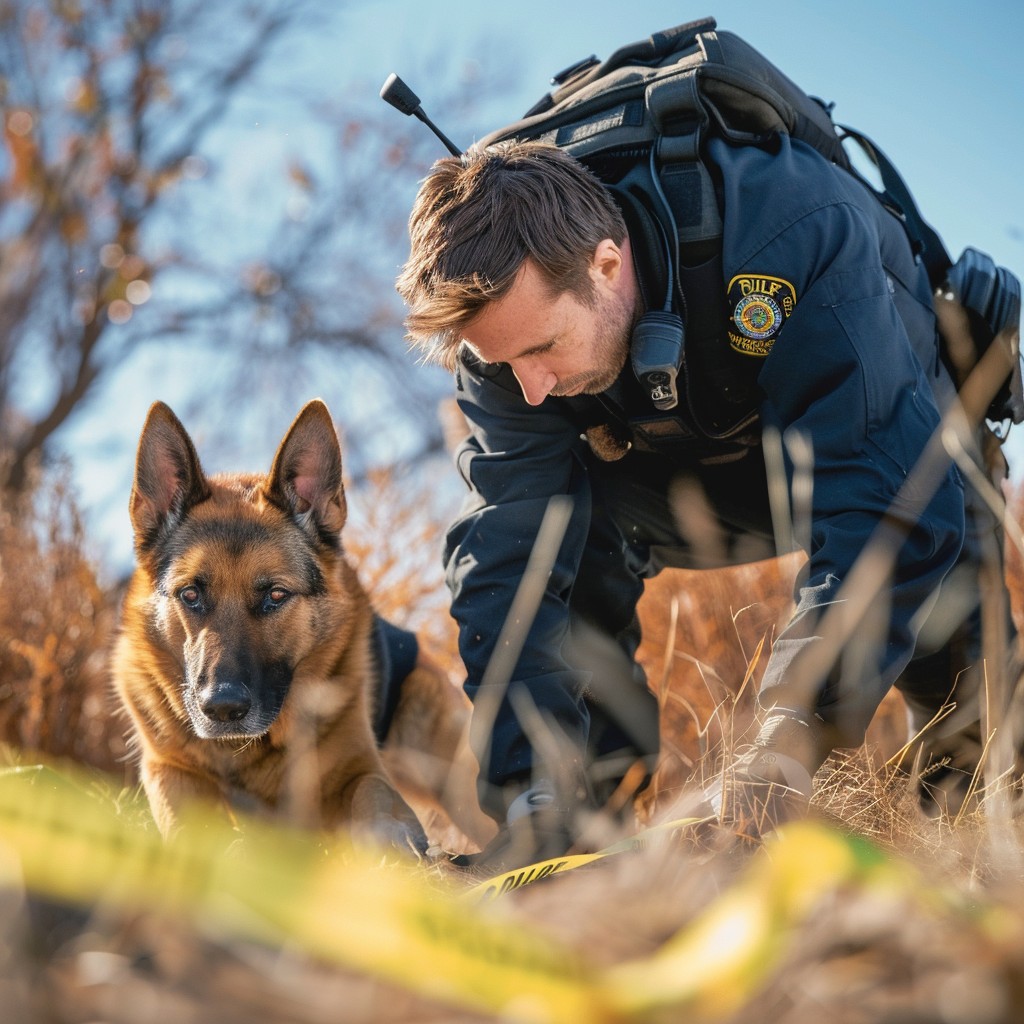The Amazing World of Detection Dogs: Unsung Heroes on Four Paws
In the realm of working animals, detection dogs stand out for their extraordinary abilities and contributions to society. These highly trained canines use their remarkable sense of smell to detect a variety of substances, ranging from narcotics and explosives to medical conditions and agricultural pests. In this blog, we’ll delve into the fascinating world of detection dogs, exploring their training, applications, and the science behind their sniffing prowess.

What Are Detection Dogs?
Detection dogs, also known as sniffer dogs, are specially trained to use their keen olfactory senses to identify specific odors. Their work is invaluable in law enforcement, security, medical diagnosis, and even conservation efforts. The breeds most commonly used include German Shepherds, Belgian Malinois, Labrador Retrievers, and Springer Spaniels, known for their intelligence, work ethic, and superior sense of smell.
What do detection dogs do?
Detection dogs have powerful sense of smell makes them highly effective in a variety of tasks, including:
- Drug Detection: Used by law enforcement agencies to find illegal drugs such as cocaine, heroin, marijuana, and methamphetamine.
- Explosive Detection: Employed to identify explosive materials and devices, helping to prevent bombings and other terrorist activities.
- Search and Rescue: Deployed to locate missing persons in disaster zones, wilderness areas, or after events like avalanches and building collapses.
- Cadaver Detection: Trained to find human remains, which is crucial in criminal investigations and after natural disasters.
- Wildlife Conservation: Used to track and monitor endangered species or to detect poachers by identifying the scent of illegal wildlife products.
- Agricultural Inspection: Assist in detecting invasive species, plant diseases, and agricultural products that might be illegal to transport.
- Medical Detection: Some dogs can be trained to detect diseases, such as cancer, diabetes (by sensing low blood sugar), and even COVID-19, by recognizing specific odors associated with these conditions.
- Arson Investigation: Used to identify accelerants that may have been used to start a fire, aiding in arson investigations.
- Bed Bug Detection: Hired by pest control companies to identify the presence of bed bugs in homes and hotels.
Detection dogs undergo rigorous training to recognize specific scents and alert their handlers when they find them. They are a crucial asset in many fields due to their accuracy and reliability.

The Science Behind a Dog’s Nose
- Olfactory Receptors: Dogs have around 300 million olfactory receptors in their noses, compared to about 6 million in humans.
- Olfactory Bulb: The part of a dog’s brain devoted to analyzing smells is about 40 times larger than ours, relative to brain size.
- Airflow Design: When dogs inhale, a fold of tissue separates the airflow into paths for respiration and olfaction, allowing them to smell continuously even while breathing.
Training Detection Dogs
Training a detection dog is a meticulous process that typically starts when the dog is still a puppy and can last several months to years. The training involves:
- Basic Obedience: Ensuring the dog can follow commands and is well-behaved.
- Scent Association: Introducing the dog to the target scent and rewarding it for successfully identifying it.
- Scenario Training: Simulating real-world scenarios where the dog will need to locate the scent in various environments.
- Continuous Reinforcement: Regular training sessions to maintain the dog’s skills and update its scent detection capabilities as needed.
Applications of Detection Dogs
Detection dogs are deployed in a variety of fields due to their versatile sniffing abilities:
Law Enforcement and Security
Detection dogs are a staple in police and military operations. They are used to locate narcotics, explosives, firearms, and even currency. At airports, border crossings, and large public events, these dogs play a critical role in ensuring safety and security.
Medical Detection
These canines are now being trained to detect medical conditions such as cancer, diabetes, and infectious diseases like COVID-19. Their ability to identify volatile organic compounds associated with diseases offers a non-invasive diagnostic tool that can potentially save lives.
Conservation and Wildlife Protection
Detection dogs assist in wildlife conservation by identifying illegal animal products like ivory or bushmeat. They also help in tracking endangered species and locating invasive species, thereby aiding in ecological balance and conservation efforts.

Search and Rescue
In disaster situations, detection dogs are invaluable for locating missing persons. Their ability to cover large areas quickly and detect human scent in challenging conditions like rubble or dense forests makes them indispensable in search and rescue operations.
The Future of Detection Dogs
As technology advances, so too does the potential for detection dogs. Research is ongoing to better understand how dogs detect scents and how their abilities can be harnessed for new applications. Advances in genomics and artificial intelligence may also lead to improvements in training methods and the development of synthetic noses modeled after canine olfactory systems.


